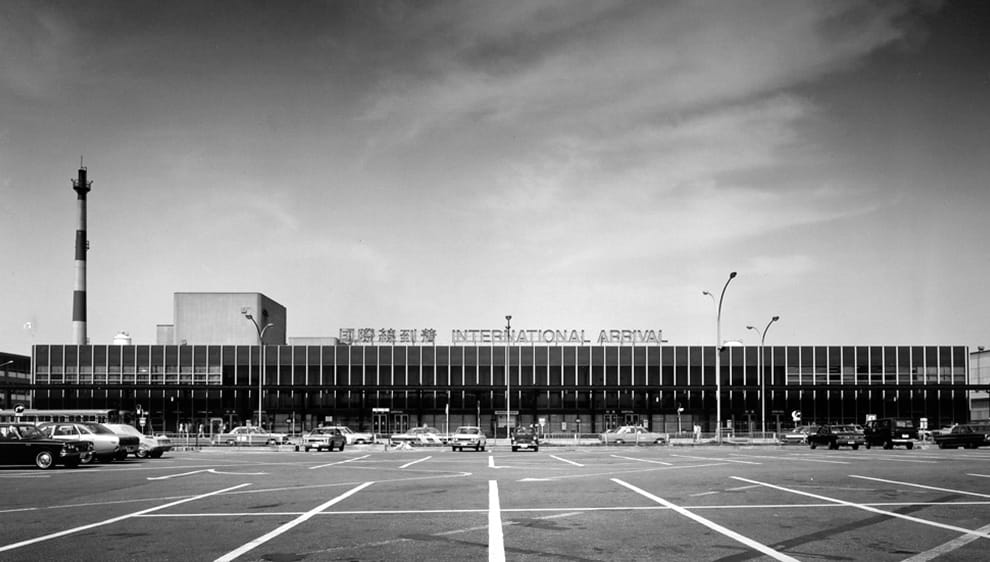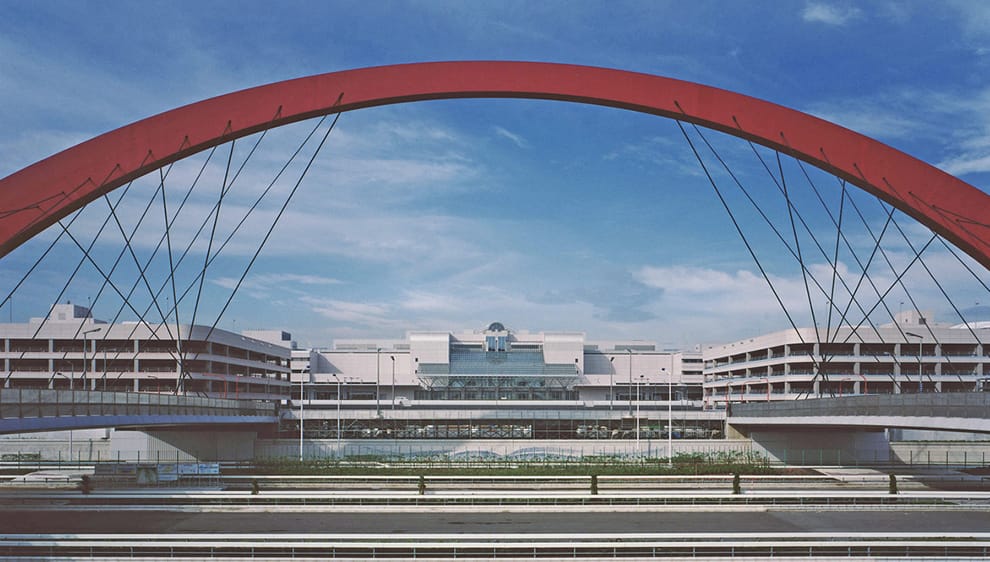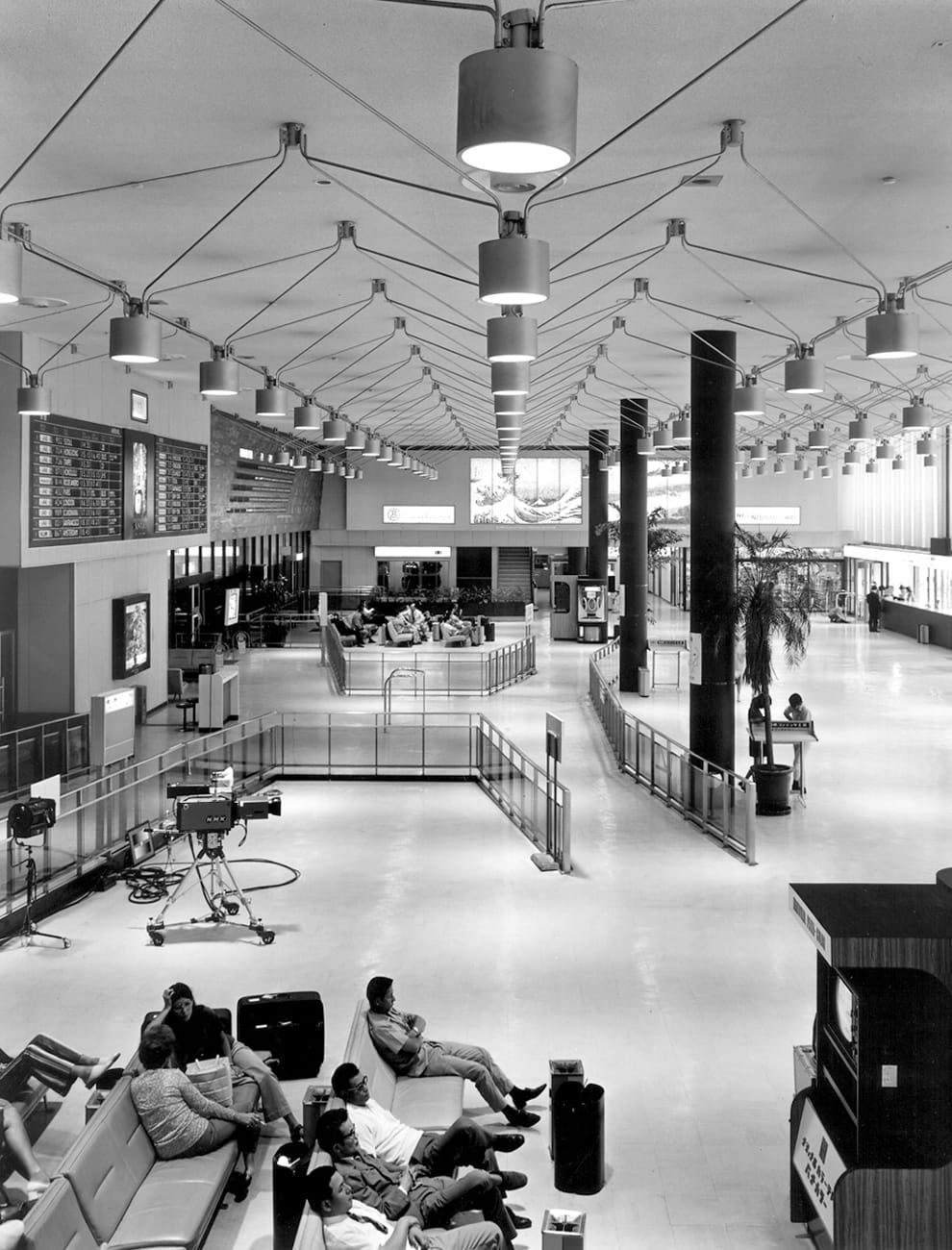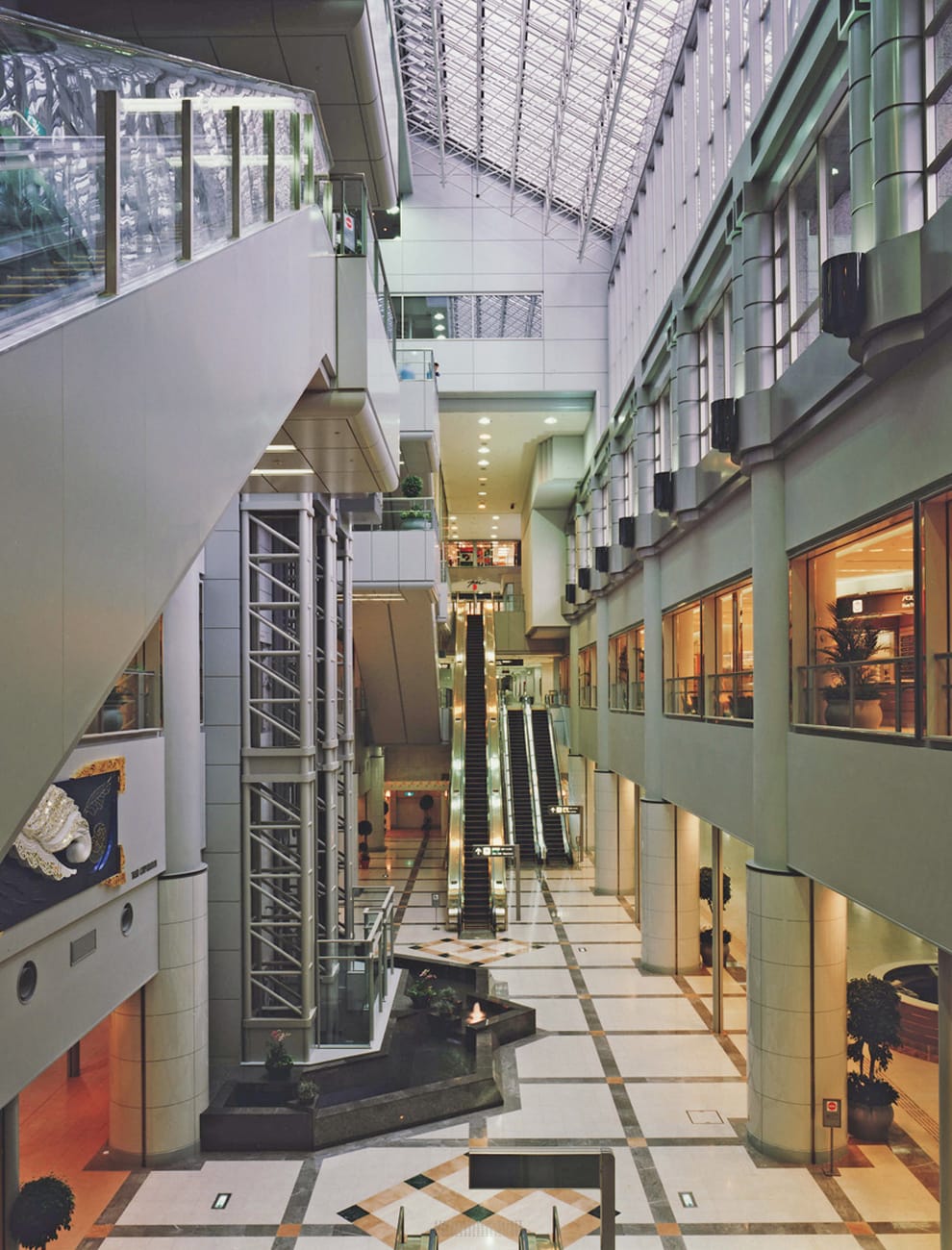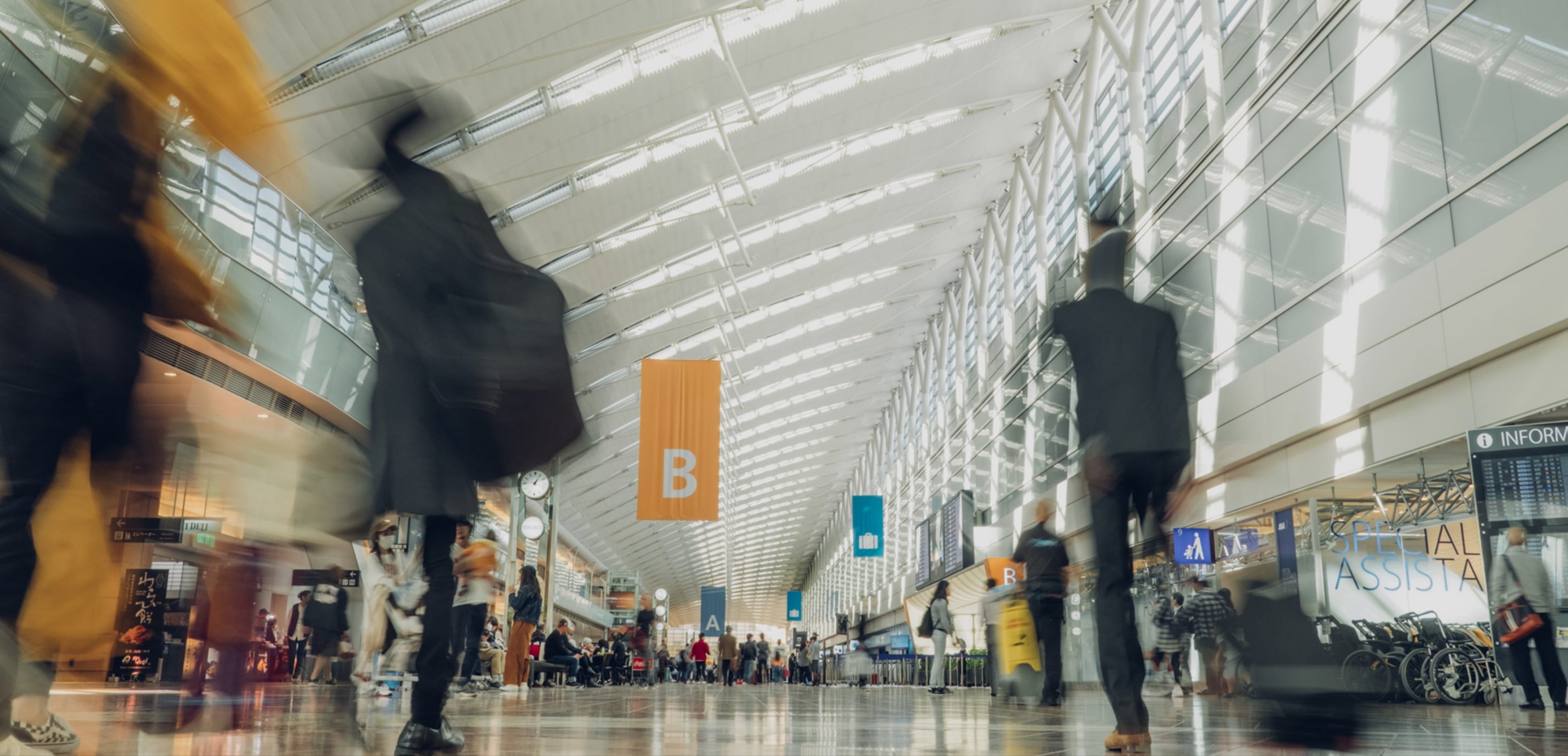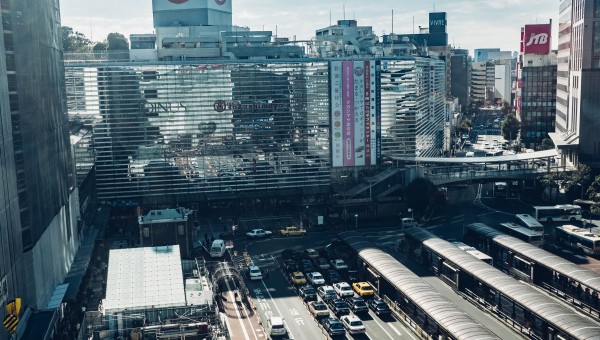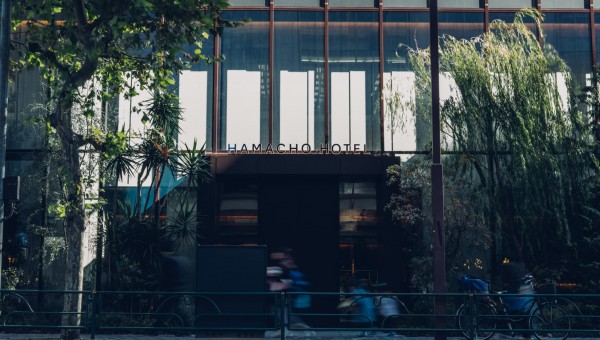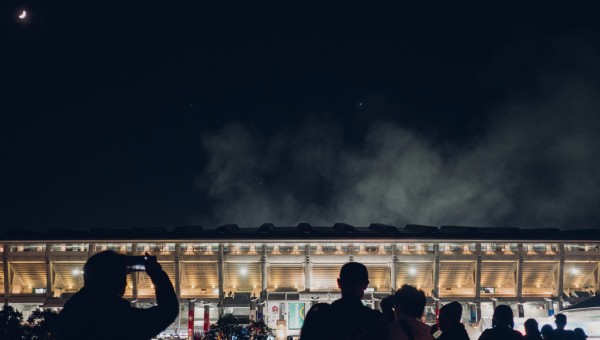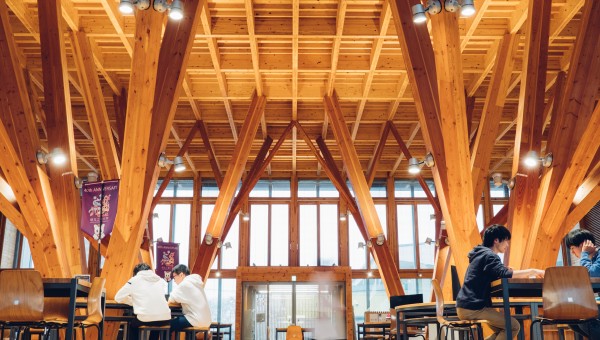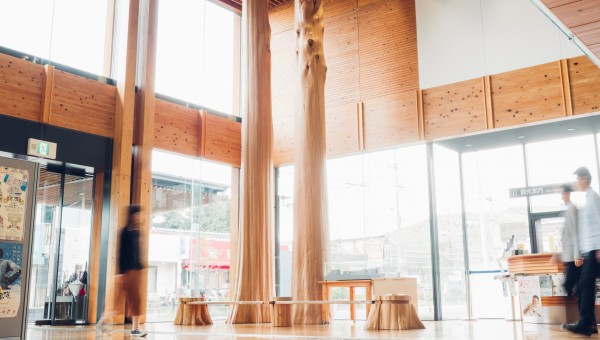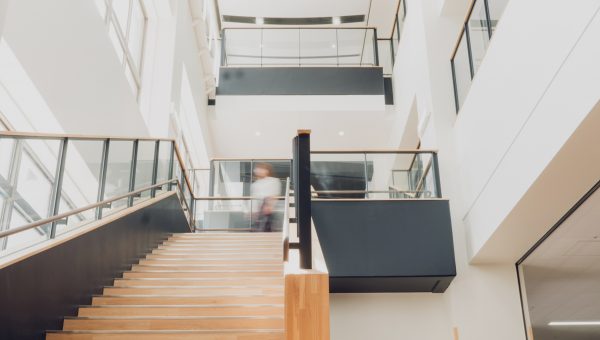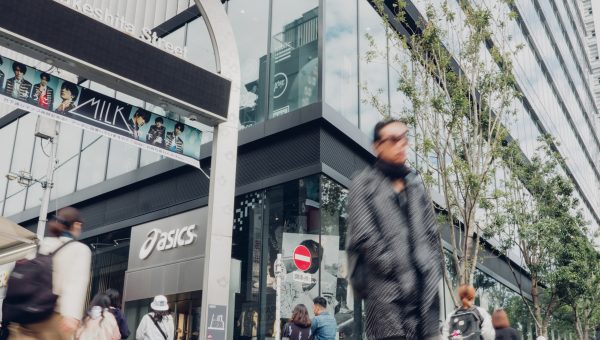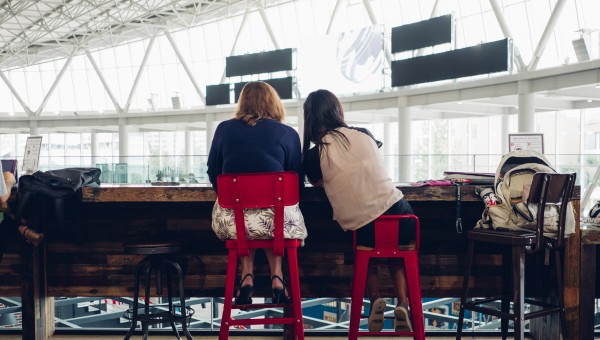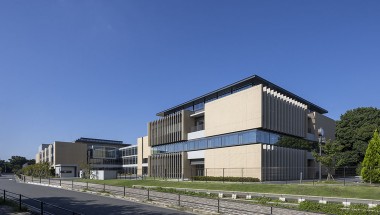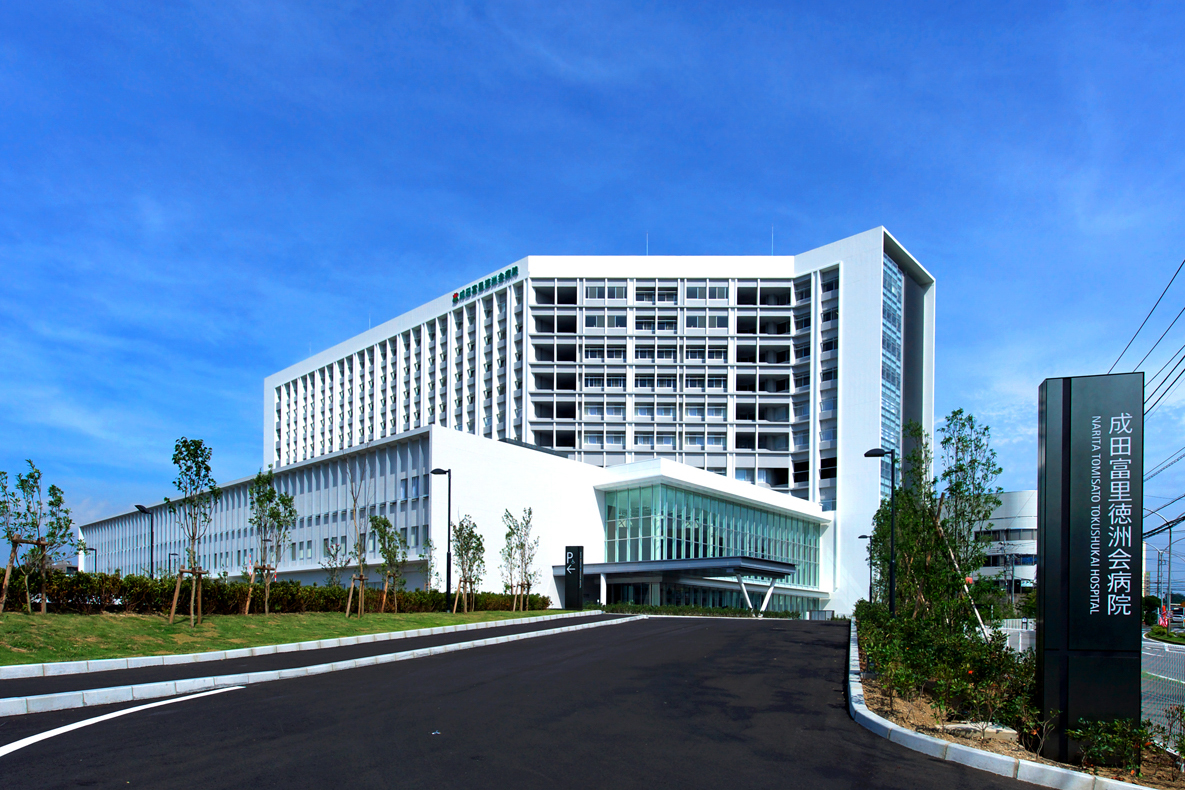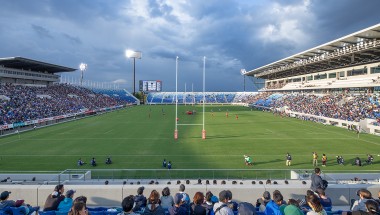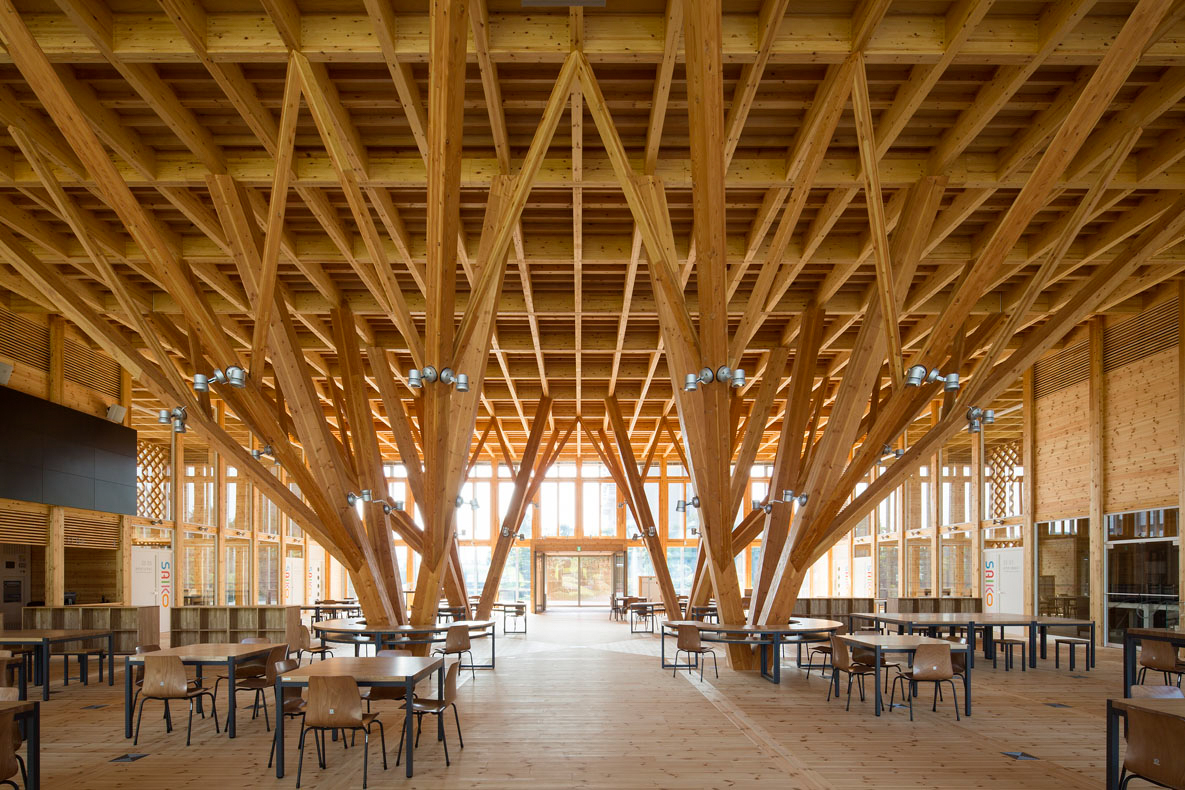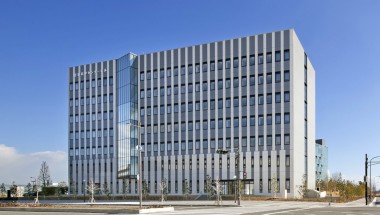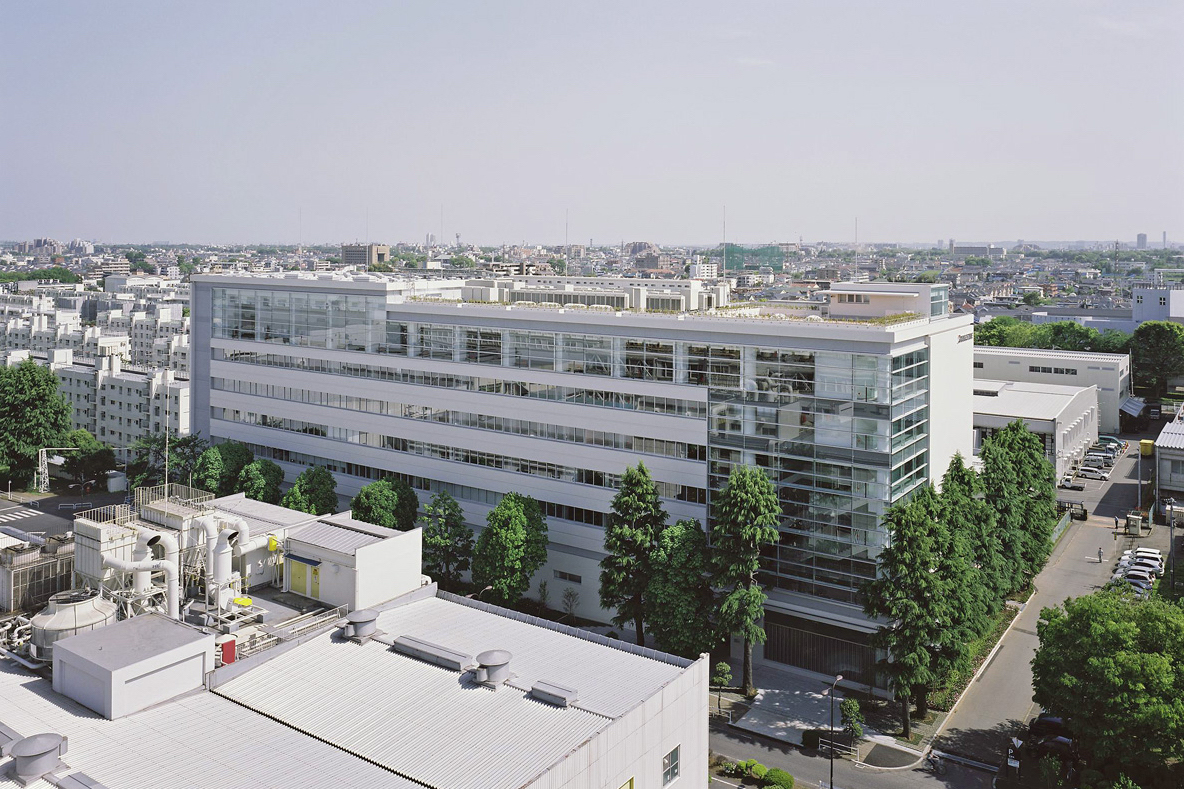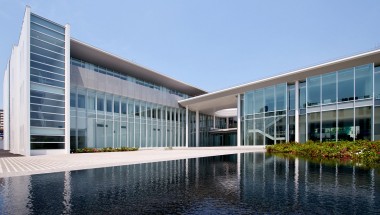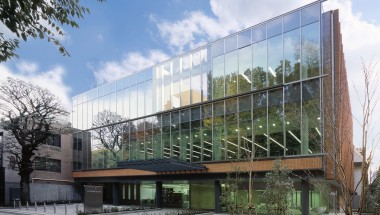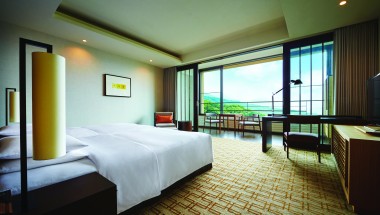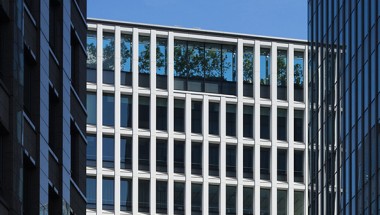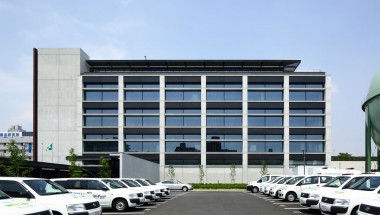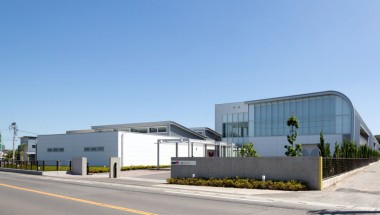Haneda Airport, the gateway to the air space of Japan which has borne the mark of MHS for over 60 years.
What exactly is required to create an airport which not only serves as a mere transit point for travel but one that offers travelers a high degree of satisfaction?
We shall find out from the very people involved.
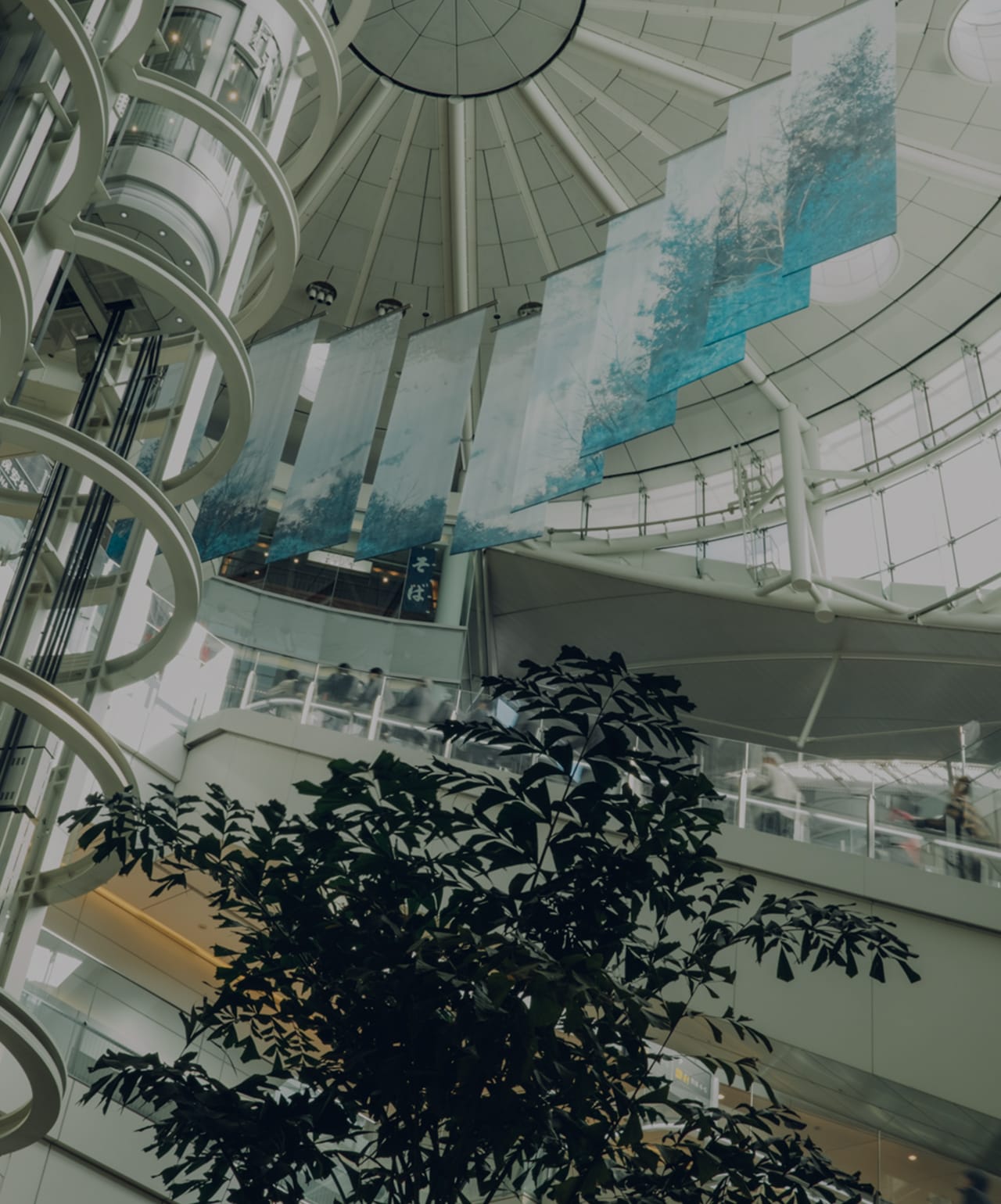
A member of the team that has created the “face of Japan.”
Administrative Planning Group / Head of the Tokyo Olympic & Paralympic Games Promotion Division
Mr. Keishi Matsuda
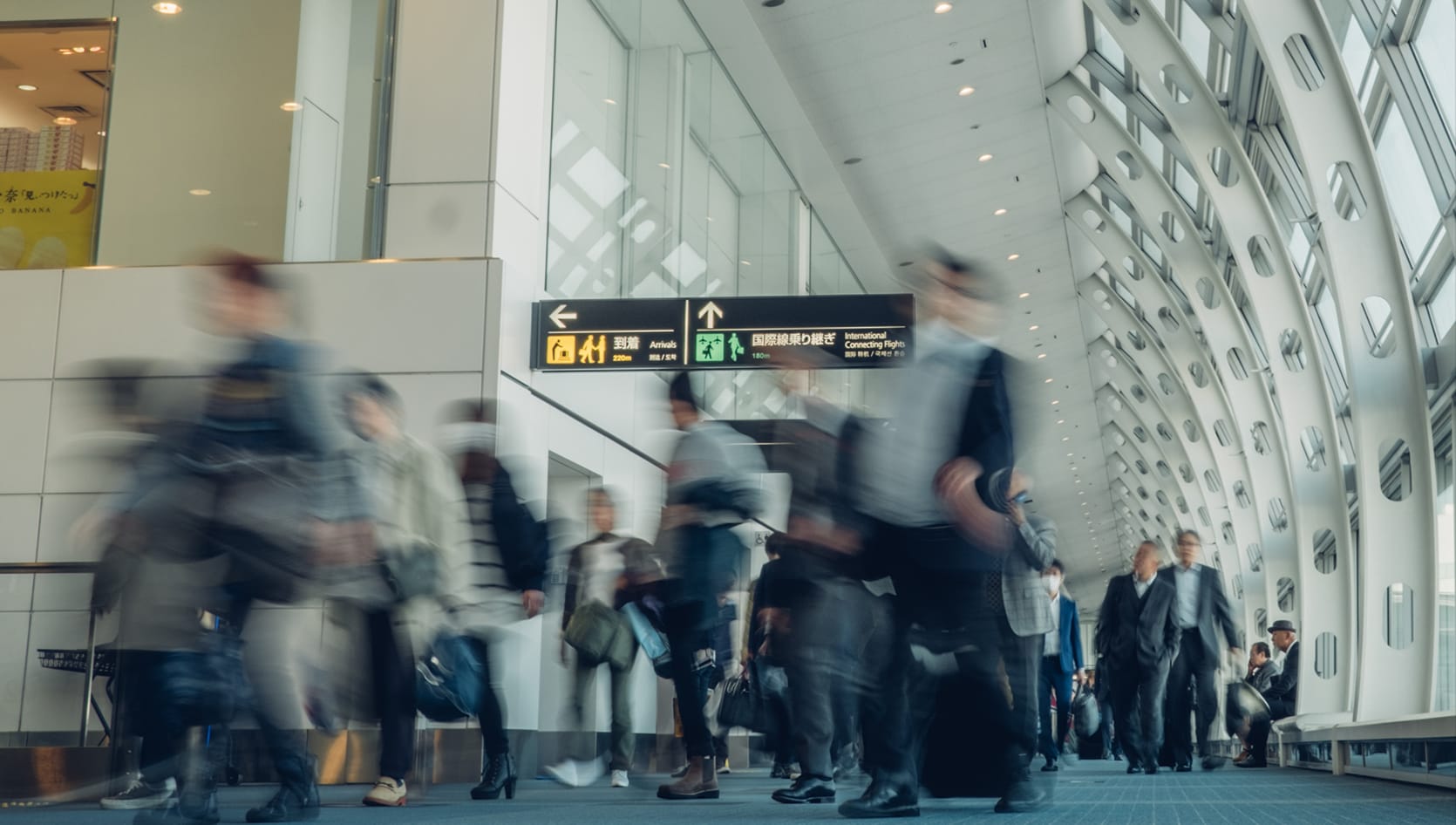
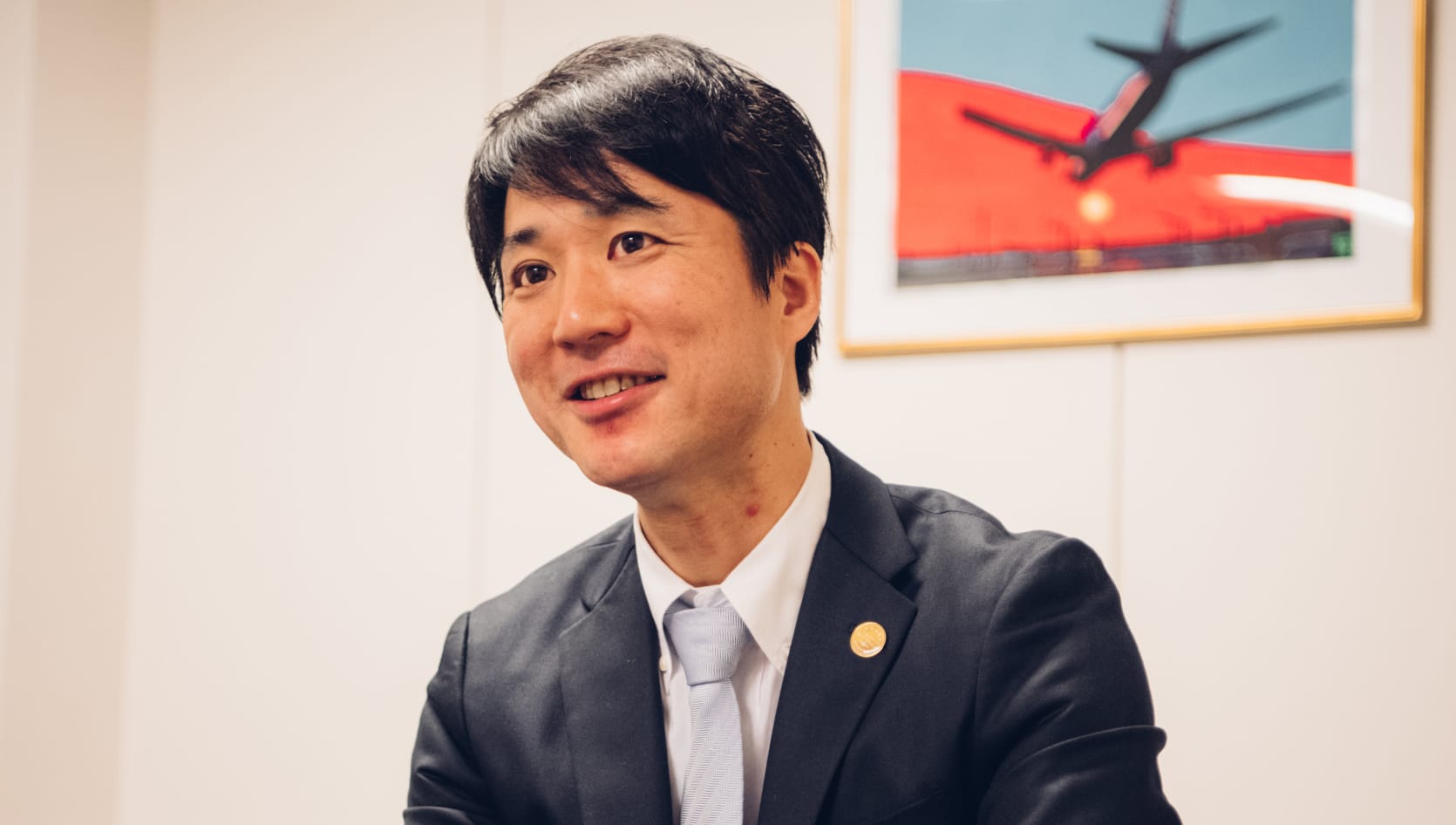
The airport’s massive central Light Cone creates an extraordinary sense of openness.
Haneda Airport serves 85 million passengers annually. In addition to the large volume of passengers, we must also bear in mind the fact that an airport has a considerable impact on one’s impressions of traveling. For tourists arriving from overseas, it would not be an exaggeration to say that their impression of our airport will be their impression of Japan. How should we go about designing this space which will be the face of Tokyo? That is the question which we have grappled with alongside MHS.
For instance, a proposal we received for the construction of Terminal 2 was to have a massive Light Cone as the central atrium of the terminal building, which will create a remarkable sense of openness throughout the entire terminal. The moment passengers enter the check-in lobby, they will be struck by its presence before their eyes. The idea was to create a unique space that marks the beginning of their travels with positive vibes. Setting up a convenient landmark that can be referred to as “the central atrium of the building” also allows passengers to intuitively grasp their current location in the airport.
What kind of commercial facilities can be found on the upper floors? And how do I get there? All these questions can be addressed visually through the design of the airport. Everything about the airport has been designed with the ultimate aim of relieving any stress that passengers may experience as they traverse the airport.
To achieve both the highest level of security and the aesthetics of openness.
Haneda Airport offers the highest level of security while ensuring the best possible travel experience. As it is imperative to take the necessary precautions to prevent the exchange of dangerous goods in the airport, departing passengers who have completed the security clearance are not allowed to cross paths with passengers arriving from other airports. Terminal 2 is the first airport terminal in Japan that introduced the idea of completely separating the departure and arrival lobbies by having them on different levels.
It is also paramount for us to ensure that Haneda Airport preserves its unique aesthetic quality of openness even as we prioritize security considerations, which is why the passageway that leads arriving passengers to the terminal has been fronted with glass. For passengers arriving at the airport at night, many airplanes and equipment can be seen to be sparkling in the distance as part of the airport’s spectacular nightscape. That is also one way for us to enhance the visceral feeling of traveling that would make passengers think, “Ah, I’m finally in Tokyo.”
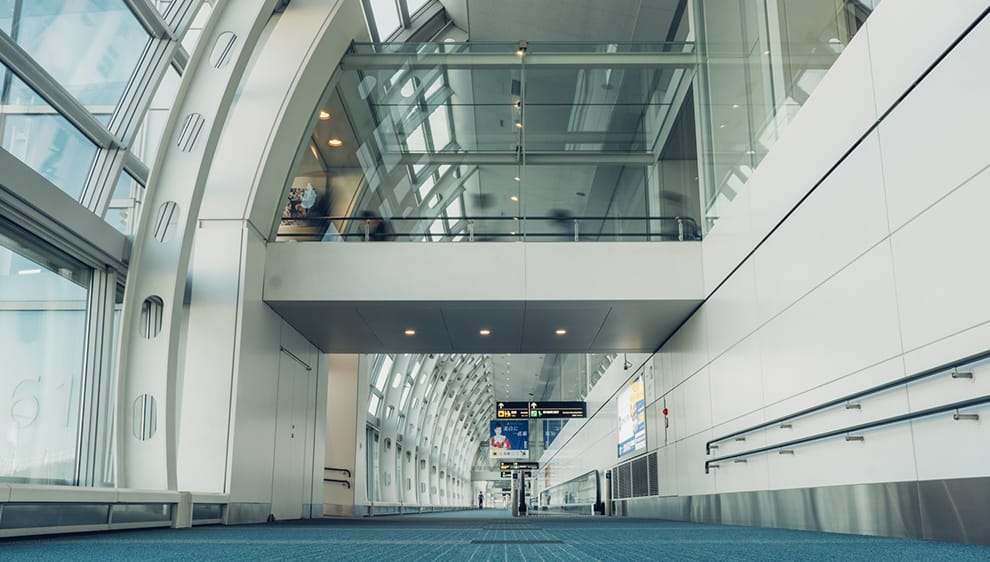
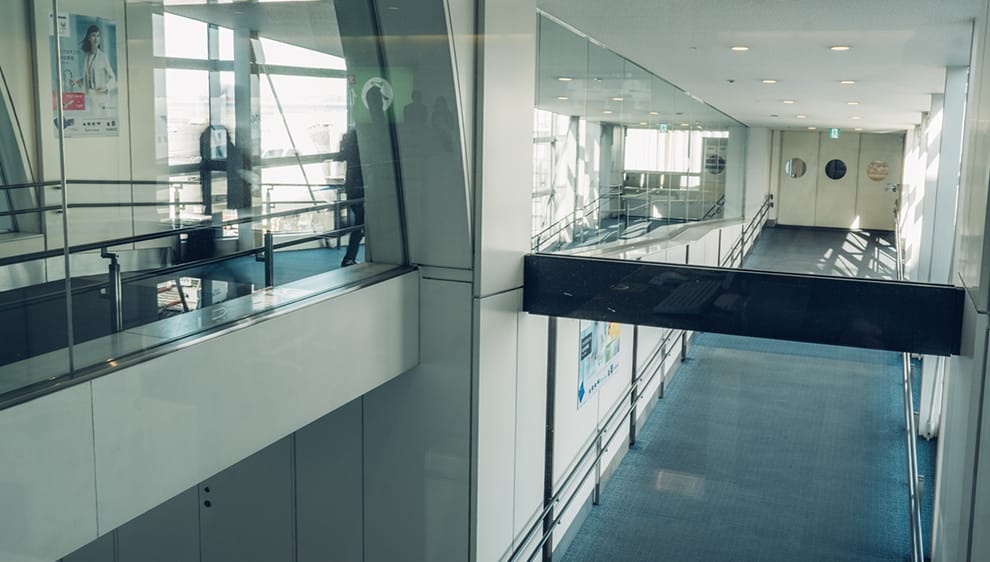
A lounge that integrates diversity with a sense of unity.
The North Satellite Terminal that opened in December of 2018 was a project on which we had collaborated closely with MHS. By connecting the 2F departure lobby with the 3F arrival lobby via an atrium, we managed to create a space that is more comfortable than ever. The interior elements of this space have also been meticulously selected. In addition to the benches often seen at airports, we have equipped this area with reclining chairs that allow passengers to look up to the impressive atrium, sofas for families to sit together, and even desks with power outlets and USB ports for charging. This addresses the diversifying travel needs of passengers, as every individual who spends time at the airport is different. We have thus endeavored to create a lobby in which everyone can spend a comfortable time. But on the other hand, we did not want to disrupt the overall modality of the space. In order to create an area that achieves the perfect balance between diversity and a sense of unity, there was no better way than to consult directly with the person who had designed the area itself, down to its finest details.
MHS is attuned to the finest details and capable of presenting everything in the best possible light.
From all our years of working together, the thing that strikes me most about MHS is its immaculate attention to the finest details in everything it does. We settled on a simple design owing to the various regulations at the airport, but MHS was able to fine-tune details of the design in a way that adheres to existing regulations while presenting everything in the best possible light. Regardless if it is an elevator door or a simple handrail, MHS makes suggestions that take into account both functionality and design even for the finest details. After all, truly special spaces are created from the gradual accumulation of painstaking attention invested into seemingly innocuous details.
In some ways, an airport is a building that does not have a final form. Moving forward, it will continue to evolve in tandem with the changing times. We would like to explore the endless possibilities of Haneda Airport together, a place that will continue to evolve ceaselessly.
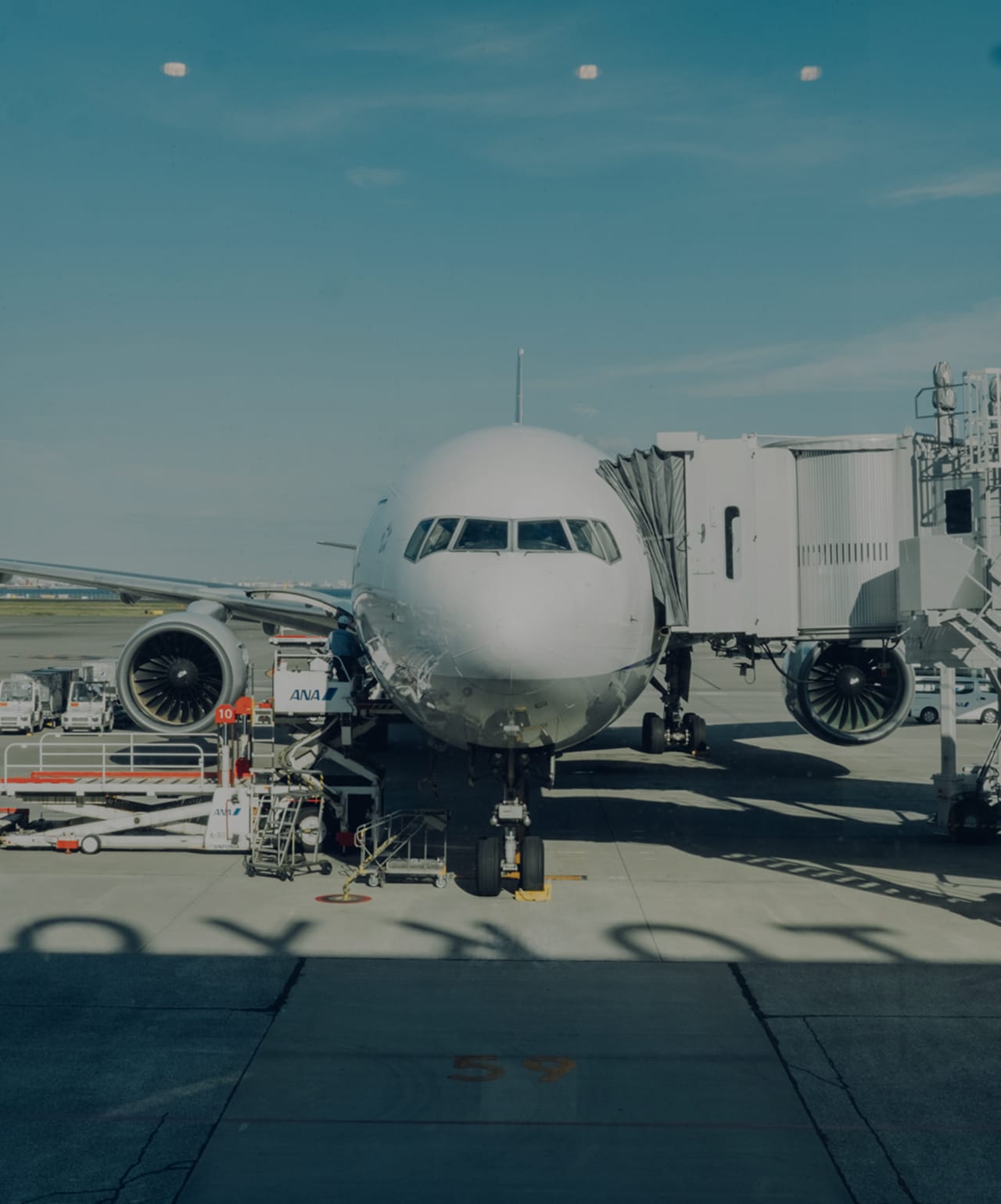
Perfect for the beginning of one’s travels,
a space that exudes the qualities of an airport.
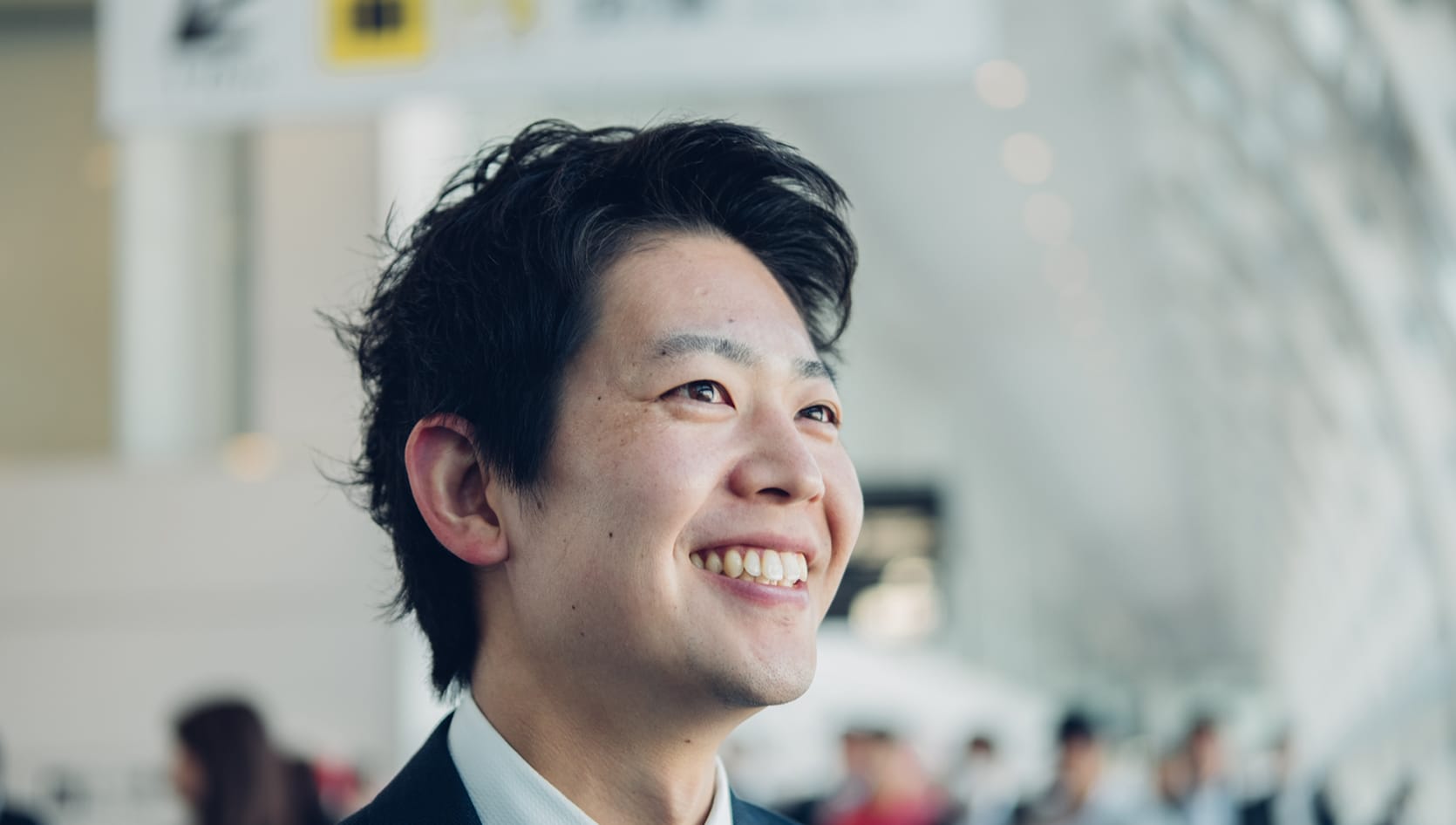
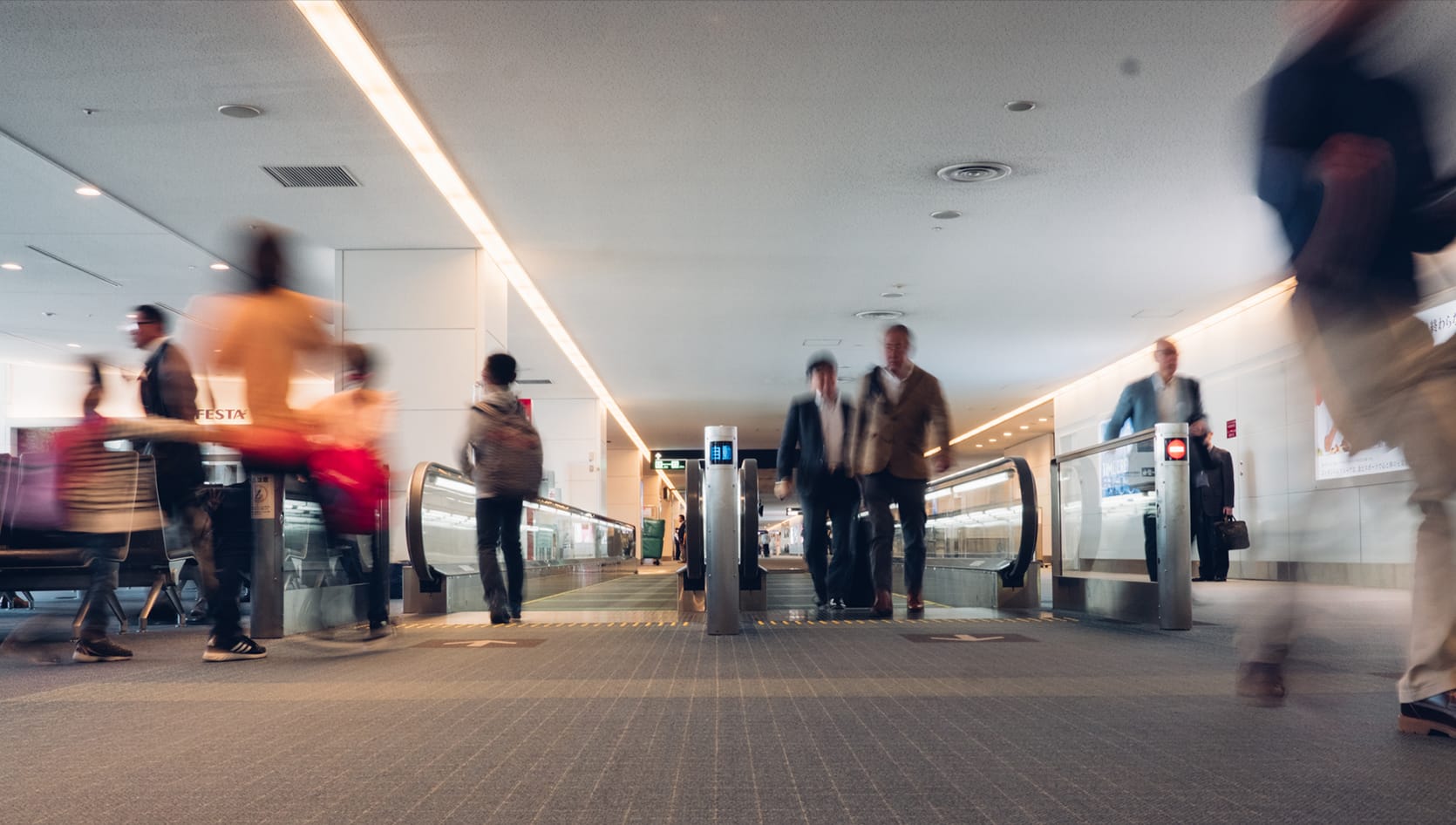
An openness and luminosity that cannot be found elsewhere. That is the beauty of Terminal 2.
Openness and luminosity─these are the qualities that set Terminal 2 of Haneda International Airport apart. I have felt that way ever since I was transferred from the International Terminal to Terminal 2 of the same airport 4 years ago. The check-in lobby of Terminal 2 has a massive atrium (Light Cone) which allows plenty of sunlight to filter through.
This highly visible symbolic space sits at the center of Terminal 2 and allows passengers to intuitively grasp their current location in the terminal. In fact, whenever I was placed in charge of counter duties, I often point to the Light Cone as a prominent landmark that passengers can use to find their way around the terminal.
The proximity to airplanes elevates the mood of traveling passengers.
When passengers look in the direction of the runway from the boarding gates, rows of large airplanes immediately come into view. Hitherto, it was rare to find an airport where passengers can be so close to the airplanes. The glass-fronted structure allows them to have a clear and expansive view of the runway, which is part of the exceptional beauty of Terminal 2. Many elements of this terminal have been designed to elevate the mood of departing passengers as well as passengers who have just landed at Haneda Airport.
This particular view has also been well received by parents who come to the boarding gate to see off their child who is traveling alone. Most parents do not leave immediately after their child has boarded the plane, but remain in the airport to watch the plane take off. From this spot, it is possible for them to watch the plane take off safely.
A simple layout makes getting around easy and ensures that passengers do not get lost.
Although the terminal is huge, its layout is actually quite simple. In most cases, passengers can only walk in one direction and they will not get lost. One unique feature of this terminal is that there is always a wide field of view. The passageways are also of adequate width to ensure that passengers can come and go safely without bumping into one another. I think that is another advantage that Terminal 2 offers.
One thing that I had only realized on hindsight was that Terminal 2 is a place that makes passengers feel very strongly that their trip has finally begun. In addition to the convenience of its amenities, the terminal’s excellent design underscores its presence as an airport of the highest tier.
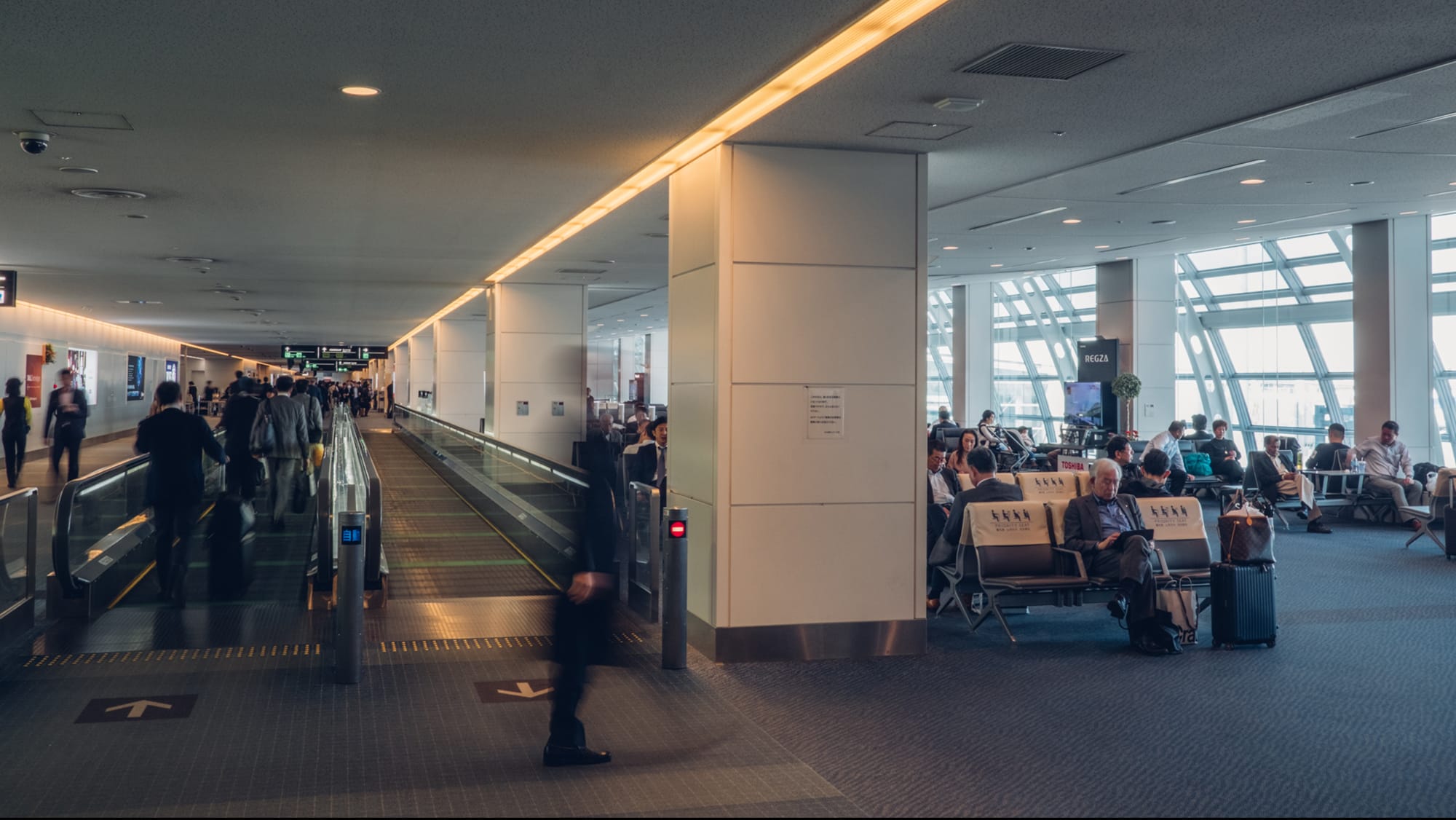
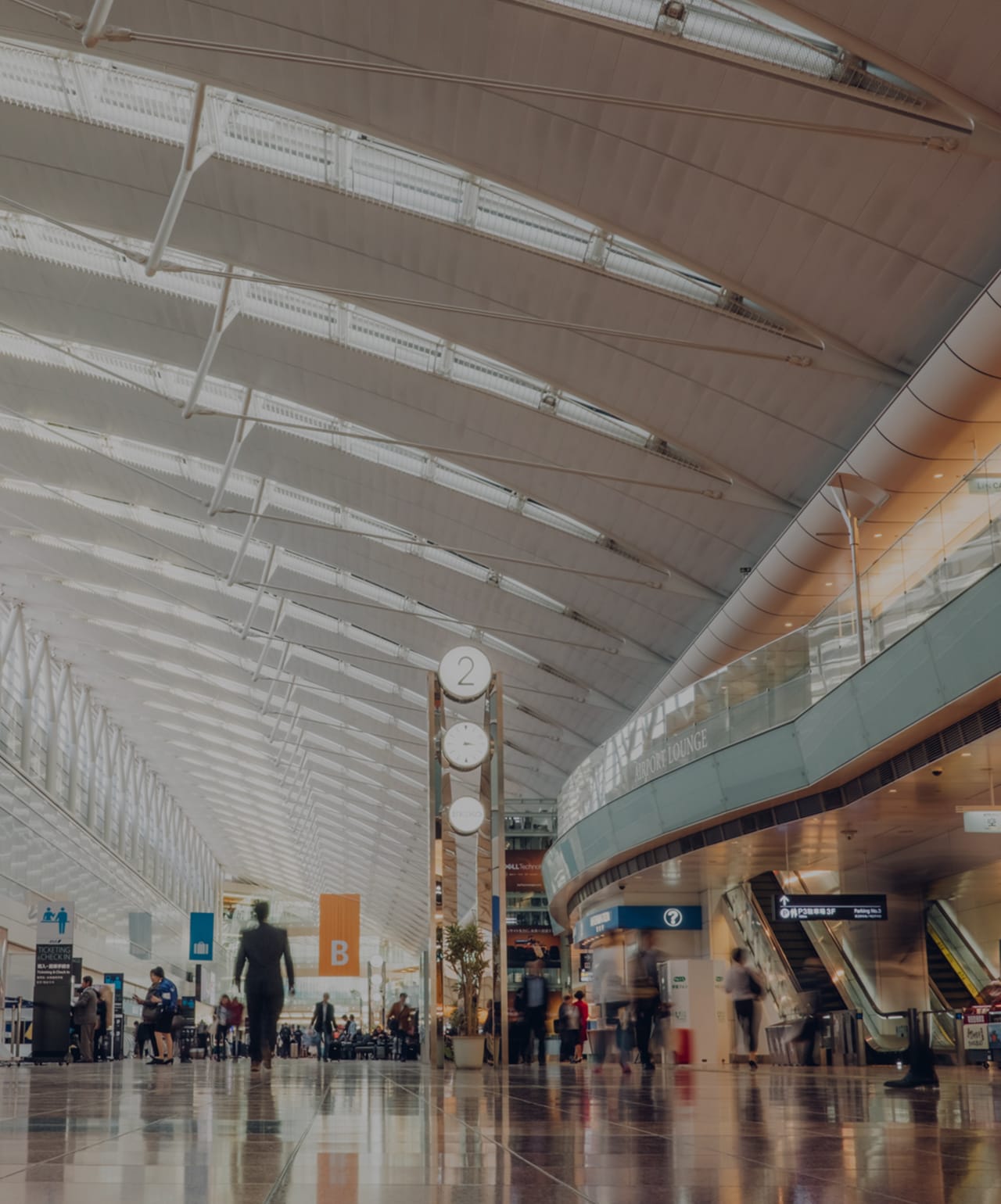
Through proposals that go the extra mile,
the airport is given an extra flourish.
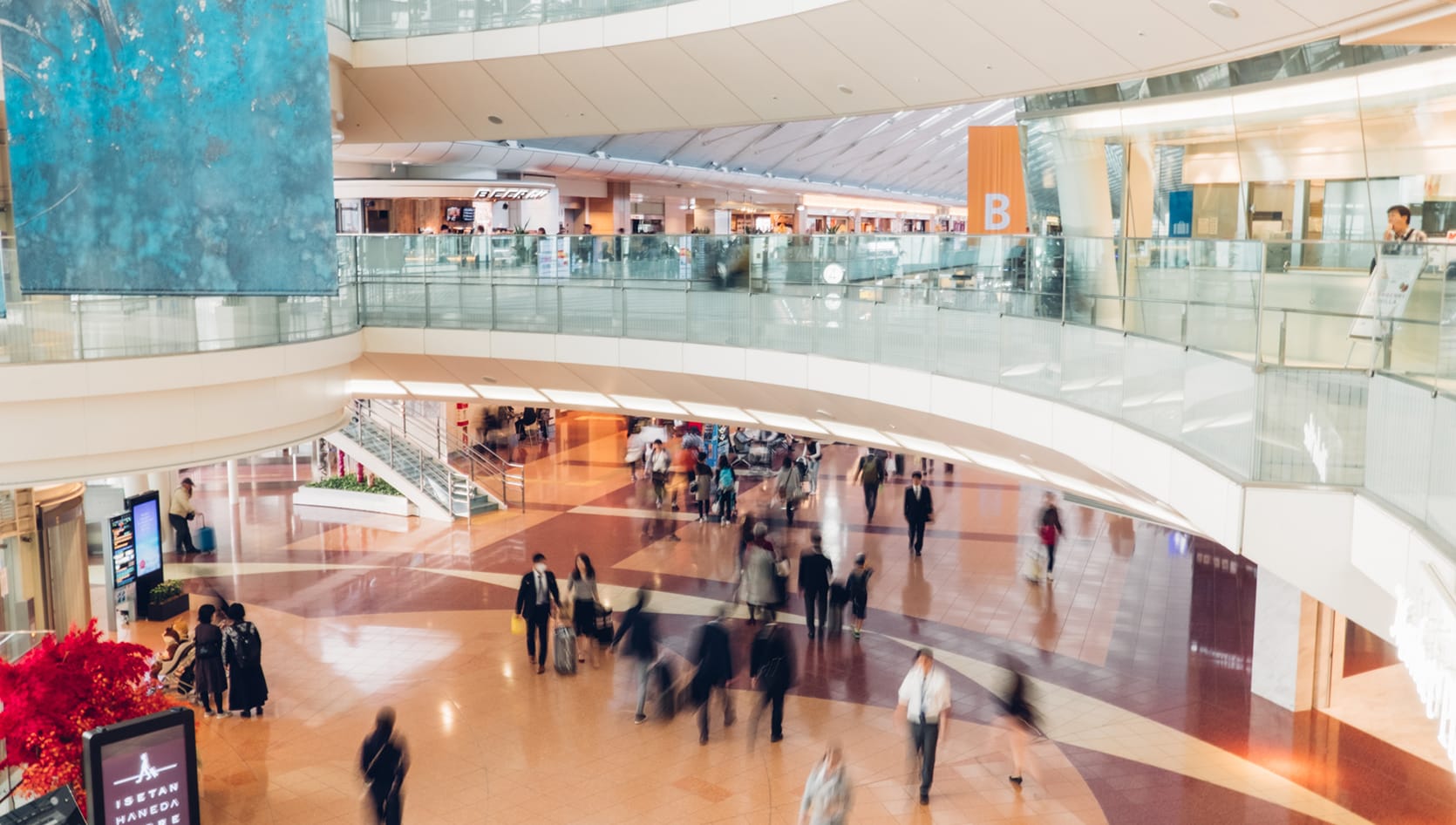
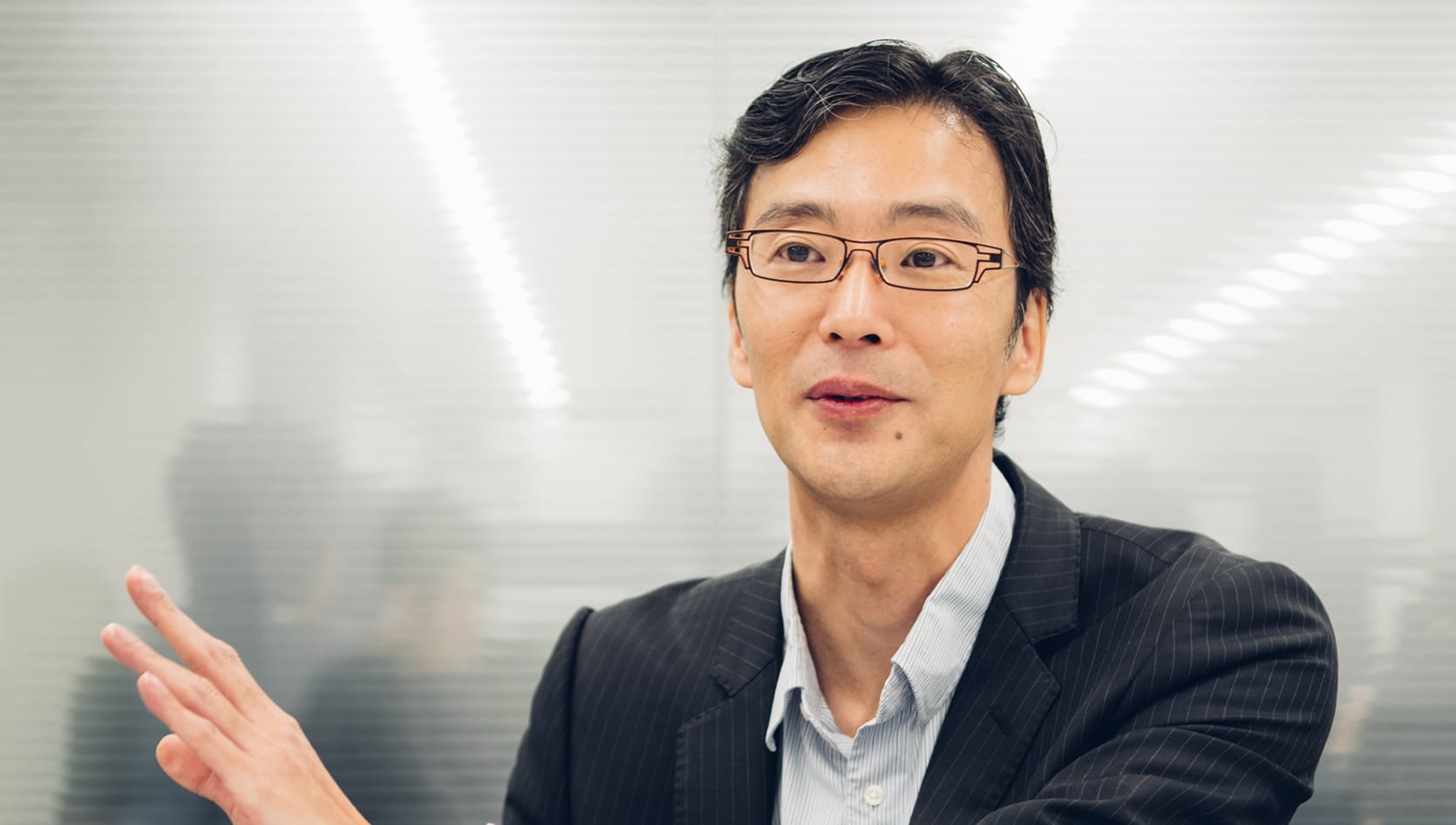
Working with the same unwavering attitude for over 60 years.
MHS has fostered a strong relationship with Haneda Airport for over 60 years. Since founder Gunpei Matsuda worked on the design of its very first terminal that was completed in 1964, MHS has been handed the responsibility of designing the former buildings of Terminal 1 and Terminal 2 as well as subsequent passenger terminals at every juncture. I have personally been involved in the Haneda Airport project since around 2000.
One thing we have always endeavored to do in these 15 years of working with Haneda Airport is to offer proposals that go the extra mile to enhance the appeal of the airport. The idea is to create an exciting space that can command the attention of people visiting the airport instead of simply satisfying its function as a transport facility. What kind of planning is required to achieve that? The MHS design team’s raison d’être is to continue posing that question.
The North Satellite Terminal offers passenger a sense of proximity to the sea and the runway.
When designing Terminal 2, we proposed setting up a massive atrium space (Light Cone) at the center of the building. It was important to offer passengers an elegant area that boasts an expansive sense of openness to elevate the excitement that they will be boarding a plane in no time. That was the aim of our design. This idea which had existed since the proposal stage of this project eventually took shape and literally became the central pillar of Terminal 2.
For the North Satellite Terminal which opened on December 10th, 2019, we were determined to create a lobby that was one of a kind. As a terminal that is located some distance away from Terminals 1 and 2, the North Satellite Terminal does not have any commercial facilities and could be misunderstood as nothing more than a boring place for passengers to wait for their flight. In order to avoid that misconception, we connected the arrival lobby with the departure lobby with an atrium to enhance the sense of openness in the terminal. By paying attention to its furniture, we endeavored to create a relaxing space reminiscent of a lounge. The fully glass-fronted facade gives passengers an excellent view of the sea and airplanes while they wait leisurely for their flight.
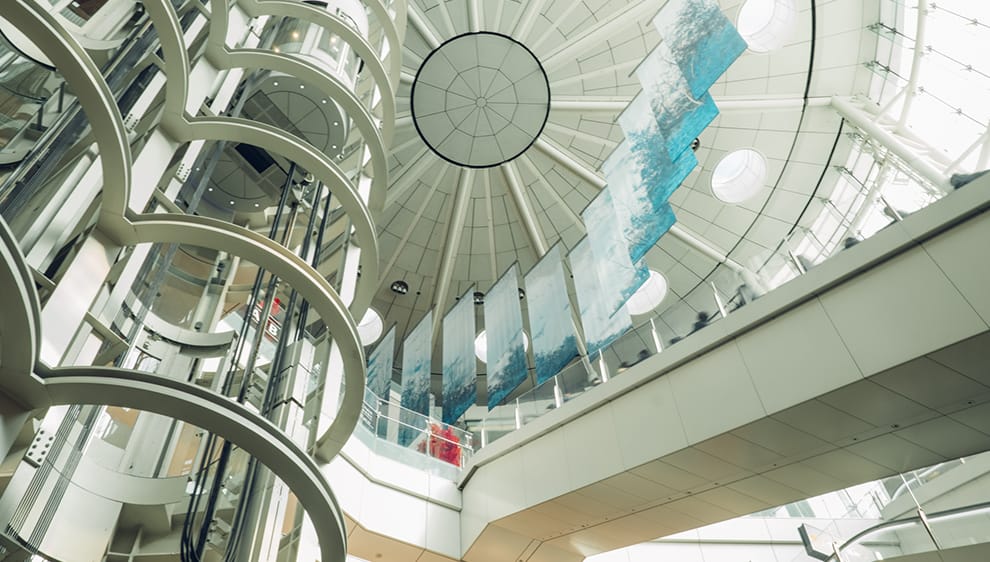
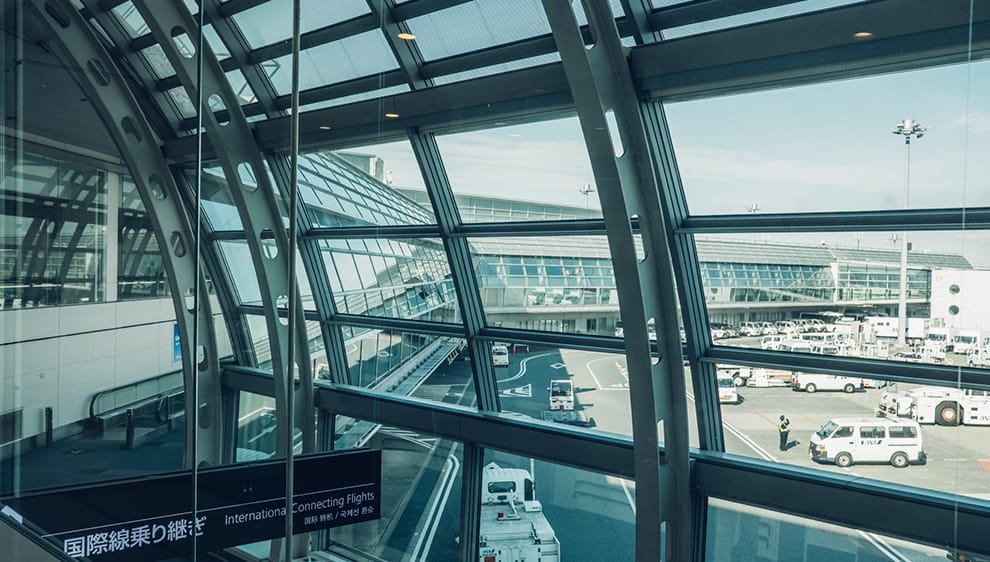
Aiming for a completely stress-free experience.
Our proposals have also made provisions from the perspective of creating a barrier-free space. One example was the handrail that has been placed along a long passageway in the arrival concourse area of Terminal 2. Setting up handrails along slopes would have been sufficient to satisfy the regulations at the time. However, we believe that if you were an elderly person or a passenger with physical disability, it would be nice to have a place to rest while making your way around the terminal. That led us to propose the installation of handrails along long passageways even in areas where there were no slopes. By constantly paying attention to the finer details from the perspective of passengers, we were able to create an airport that offers utmost convenience.
Changes have also been made to the North Satellite Terminal in the interest of creating a more barrier-free space in view of the upcoming Olympic and Paralympic Games in 2020. The passageway has been made wider and more languages have been added to the information board. With an increasing number of imposed constraints, it has become more difficult to manage the layout of the limited space within the premises, but overcoming such hurdles is part of our job. Our goal is to create a terminal that does not give the faintest impression that it has been deliberately modified to become barrier-free. It would be amazing if we could create a space that offers everyone a completely stress-free experience of the airport.
Our unprecedented ideas could take shape only because we were working with highly receptive clients.
The various ideas that we had proposed could only have been realized because our client was Japan Airport Terminal Co., Ltd. In particular, ideas that are not based on precedents can only be grasped by ambitious clients who are seeking the very highest level of design. It was our good fortune to be able to work with a client with whom we could have a constant exchange of ideas that were eventually refined and implemented to achieve our common goal of creating an even better airport.
In order to cater to the increasing aviation demands, Haneda Airport would be required to evolve even further. In fact, several extension projects are already underway, but our job remains the same: to make proposals that go the extra mile to serve the interest of users of the airport. I would love to pass on the ethos of MHS that I have inherited from my seniors in the course of working with Haneda Airport to my juniors at MHS.
